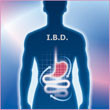While the potential pharmacoeconomic benefits of cost-effective biosimilars seem clear, several issues have been raised regarding, for example, the definition of biosimilarity and the validity of indication extrapolation, as well as the ‘switchability’ and relative immunogenicity of biosimilars and their reference drugs. In a review by Isaacs and co-authors, these questions with reference to CT-P13 (Remsima, Inflectra), a biosimilar of the anti-tumour necrosis factor (TNF) monoclonal antibody infliximab (Remicade) were discussed [1].
Evidence from rheumatoid arthritis (RA) and ankylosing spondylitis (AS) should not be applied to inflammatory bowel disease (IBD) or psoriasis because of differences in disease pathogenesis and in the mechanism of action of infliximab in different immune-mediated inflammatory diseases (IMIDs)
To put these concerns in context, while a biosimilar cannot be identical to the reference drug, the important point to consider is whether any differences between the two drugs are clinically relevant. The European Medicines Agency (EMA) evaluated CT-P13 with respect to its physicochemical properties and in vitro biological activities and established that CT-P13 can be considered biosimilar to reference infliximab.
Use of RA as a model of efficacy is questioned
RA is the most common inflammatory rheumatic disease and infliximab is approved for this indication. The extent of clinical experience is greater in RA than in other indications.
Dose differences between indications also complicate extrapolation of efficacy
It is relevant that infliximab is actually approved in RA for doses between 3 and 7.5 mg/kg. Furthermore, it is clear from real-life experience that the mean dose applied in RA is close to 5 mg/kg. The results showed that the efficacy and safety profiles between CT-P13 and reference infliximab were very similar in the PLANETAS study [2].
AS and RA are not the appropriate models from which to extrapolate immunogenicity data
The critical factor in assessing immunogenicity is the sensitivity of the assay utilized. The immunoassay method adopted in the two main clinical trials of CT-P13 was highly sensitive and was in line with the EMA requirements.
Can patients be safely switched from a reference drug to its biosimilar?
Efficacy and safety (including immunogenicity) were similar up to week 102 of the open-label extension phase of the PLANETRA and PLANETAS studies, as well as in retrospective Korean study. These data suggest that it is possible to switch from reference infliximab to the biosimilar.
Are there likely to be differences in the anti-drug antibody (ADA) response between a biosimilar and its reference drug?
Efficacy of treatment was reduced in patients with ADAs in both PLANETAS and PLANETRA but this reduction was seen with both the reference infliximab and CT‑P13. There were no statistically significant differences between treatment groups in any efficacy endpoint at week 30.
How should the risk/benefit profile of approved biosimilars be monitored in clinical practice?
In Europe, a company that submits a biosimilar for regulatory approval must provide EMA with details of a risk management plan and pharmacovigilance programme at the time of application.
The authors concluded that ‘based on all evidence available to date, and accepting that there are some properties of biological drugs that cannot be assessed with current technologies, we do not expect to see important differences emerge in the clinic between CT-P13 and reference infliximab, or indeed between other EMA approved biosimilars and their respective reference drugs’.
Conflict of interest
Several of the authors of the research paper [1] reported conflicts of interest, including having received honoraria from pharmaceutical companies for talks, participation in advisory boards and consultancies.For full details of the authors’ conflicts of interest, see the research paper [1].
Abstracted by M Cutolo, MD, Professor of Rheumatology and Director at the Research Laboratory and Academic Division of Clinical Rheumatology, Department of Internal Medicine, University of Genoa, Italy.
Editor’s comment
Readers interested to learn more about biosimilars and extrapolation are invited to visit www.gabi-journal.net to view the following manuscript published in GaBI Journal:
Biosimilars: extrapolation of clinical use to other indications
If you are interested in contributing a research article in a similar area to the GaBI Journal, please send us your submission here.
Related articles
Clinical trials for infliximab biosimilars
Biosimilars of infliximab
References
1. Isaacs JD, Cutolo M, Keystone EC, Park W, Braun J. Biosimilars in immune-mediated inflammatory diseases: initial lessons from the first approved biosimilar anti-tumour necrosis factor monoclonal antibody. J Intern Med. 2015 Sep 25. doi:10.1111/joim.12432. [Epub ahead of print]
2. GaBI Online - Generics and Biosimilars Initiative. Open-label studies show similarity of biosimilar infliximab and Remicade [www.gabionline.net]. Mol, Belgium: Pro Pharma Communications International; [cited 2015 Oct 9]. Available from: www.gabionline.net/Biosimilars/Research/Open-label-studies-show-similarity-of-biosimilar-infliximab-and-Remicade
Permission granted to reproduce for personal and non-commercial use only. All other reproduction, copy or reprinting of all or part of any ‘Content’ found on this website is strictly prohibited without the prior consent of the publisher. Contact the publisher to obtain permission before redistributing.
Copyright – Unless otherwise stated all contents of this website are © 2015 Pro Pharma Communications International. All Rights Reserved.








 0
0










Post your comment